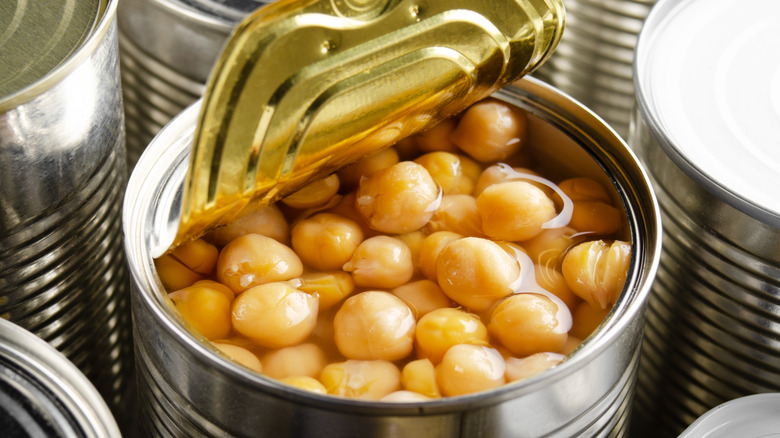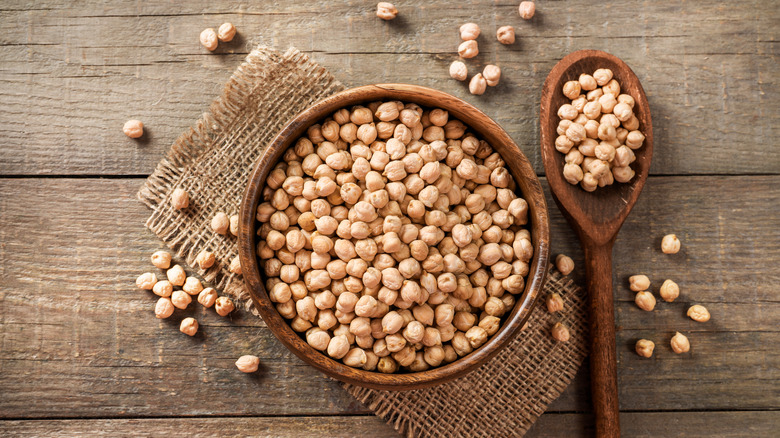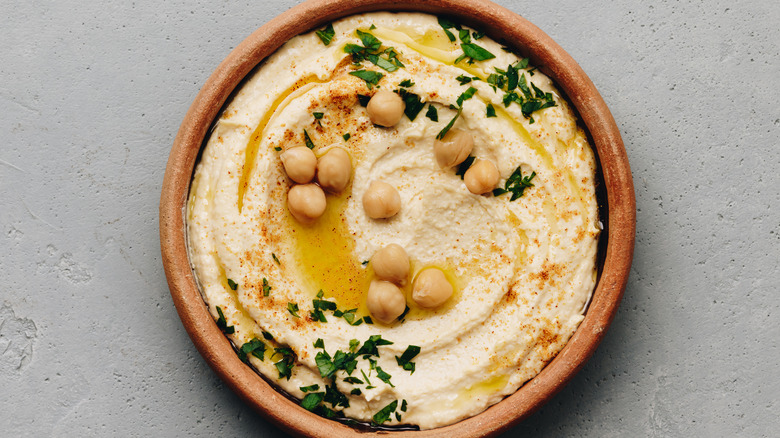The Reason You're Better Off Using Canned Chickpeas For Hummus
That headline sounds sacrilegious, doesn't it? After a long time spent listening to chefs like Yotam Ottolenghi tell us that the process to make hummus starts by soaking dried chickpeas the night before, can we actually just grab the can of chickpeas in the pantry and make — dare we say it — hummus in under 15 minutes?
Some food writers have already conceded that it is possible to make a decent batch of hummus with canned chickpeas. The obvious advantage here is that it's quicker and does not require planning ahead. But more than that, the benefit of relying on canned chickpeas is its texture.
Canned chickpeas are typically softer and can be easily mashed or blended, which results in a smoother and creamier hummus. In comparison, dried chickpeas can sometimes retain their firmness even after rehydrating and cooking, which makes it more challenging to get the right consistency.
Why dried chickpeas may not get soft enough
A reminder of what goes into hummus: It consists of a few main ingredients (chickpeas, olive oil, garlic, and fresh lemon juice) blended together and thinned out with water. These days, there exists everything from beetroot hummus to chocolate hummus, but since "hummus" translates to "chickpea" in Arabic, a dip should probably have some resemblance with chickpeas to qualify as hummus.
If you're using dried chickpeas, you have to soak them for about 24 hours until they expand in size, and then boil them. Some recipes specifically state the chickpeas should be intentionally overcooked. The problem is, dried chickpeas can vary in terms of texture and size, so even after boiling for a few hours, they may not be soft and pliable enough — never mind being overcooked.
Proponents of dried chickpeas in hummus recommend putting a pinch of bicarbonate soda into the soaking water to help soften the chickpeas, and they have the science to back up this claim. Water mixed with bicarb soda becomes alkaline, and this helps the pectin molecules in the chickpeas stay separate, becoming soft and fluffy. Unfortunately, if you use too much bicarb soda, though, the chickpeas will form an unpleasant, soapy taste.
Why canned chickpeas have the right texture
In comparison to dried chickpeas, canned chickpeas are pre-cooked and softened, which means you can skip the lengthy soaking and cooking processes. The texture is already ideal for blending and pureeing. Since canned chickpeas have a nearly uniform consistency, it's a breeze to blend them into silky-smooth, creamy hummus. This eliminates the guesswork associated with preparing dried chickpeas, which is great news for amateur cooks.
In addition, the aquafaba from canned chickpeas actually comes in handy to make hummus — that's the viscous water in a can of chickpeas, which most people drain away. In actuality, this water becomes foamy and frothy when whipped, so if you add aquafaba into a blend of hummus ingredients, then it increases the dip's creaminess.
Another tip to get creamy hummus is to remove the skin from the chickpeas. To do this, toss the drained, canned chickpeas with bicarb soda and heat them in the microwave until they become hot. This mimics the step to cook dried chickpeas, which has the added benefit of separating the skin from them. Then, after a few rounds of rinsing in cold water, you'll be left with skinless chickpeas to make a delicious bowl of hummus with.
The final step is the easiest. Get some pita bread (or just a spoon) and scoop it up!


